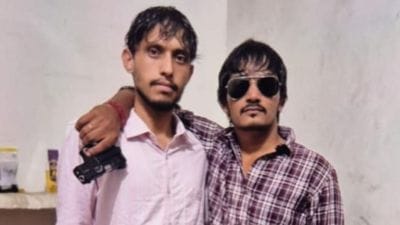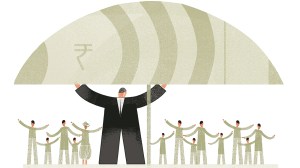Niyazov holds sway over Turkmen
ASHGABAT (Turkmenistan), Aug 25: Every morning, school children in this desert nation rise from their desks and pledge allegiance to their ...

ASHGABAT (Turkmenistan), Aug 25: Every morning, school children in this desert nation rise from their desks and pledge allegiance to their country and, more importantly, to President Saparmurat Niyazov.
“For the slightest slander, let my tongue be lost,” they chant in unison. “At the moment of my betrayal to my motherland, to her sacred banner, to my President let my breath stop.”
In classrooms, at Government gatherings and on state-run television, this requisite oath sets the stage for the daily worship of Niyazov. A portly, Soviet-era holdover, he has spent lavishly to build a cult of personality while the economy has languished, turning the impoverished young nation into a personal fiefdom.
Niyazov, a jowly, white-haired man of 57, is the most striking example of the strongmen who dominate the five Muslim countries of Central Asia that received independence in the 1991 break-up of the Soviet Union.
In Turkmenistan’s five-and-a-half years of independence, Niyazov has built palaces, mosques and airports bearing his name, erected statues and larger-than-life portraits in the most remote towns and villages, put his face on all the currency and renamed roads and cities in his honour.
He’s even renamed himself now answering to `Turkmenbashi,’ or leader of all Turkmen.
There’s virtually no escaping his presence. Deep in the Karakum desert, along a sun-baked strip of highway, hand-painted road signs offer up homilies from the President.
“We shall turn our country into a blooming garden,” reads one sign implanted in the parched sands.
The Central Asian leaders dream of restoring long-faded glory to an isolated territory that was ruled by the likes of Genghis Khan and Tamerlane, and which provided the bridge between Europe and Asia for centuries with its fabled silk road. Though most former Soviet lands struggle with imperfect democracies, the Central Asian leaders consistently have resisted moves toward genuine elections, a free Press and other modern political institutions.
Four of the five Central Asian Presidents came to power when their republics were still part of the Soviet Union. Niyazov became the Moscow-approved President of Turkmenistan in 1985 and held onto power after independence. He still leads the former Communist Party, now renamed the Democratic Party.
The leaders have ditched the Communist ideology, yet clung to authoritarian rule by reviving the Central Asian tradition of powerful Khans who ruled over the soaring mountains and vast deserts with absolute authority.
All five appear firmly entrenched, without any serious opposition, and are likely to lead their countries well into the 21st century.
Meanwhile, the entire region struggles economically. Projects to tap oil, gas, gold and silver reserves all are moving much more slowly than forecast, leaving much of the area’s nearly 54 million people in poverty.
“Despite the initial optimism at independence, all the leaders have reverted to authoritarian rule,” said Ahmed Rashid, a Pakistani journalist and author of the book, The resurgence of Central Asia.
Photos





- 01
- 02
- 03
- 04
- 05


























